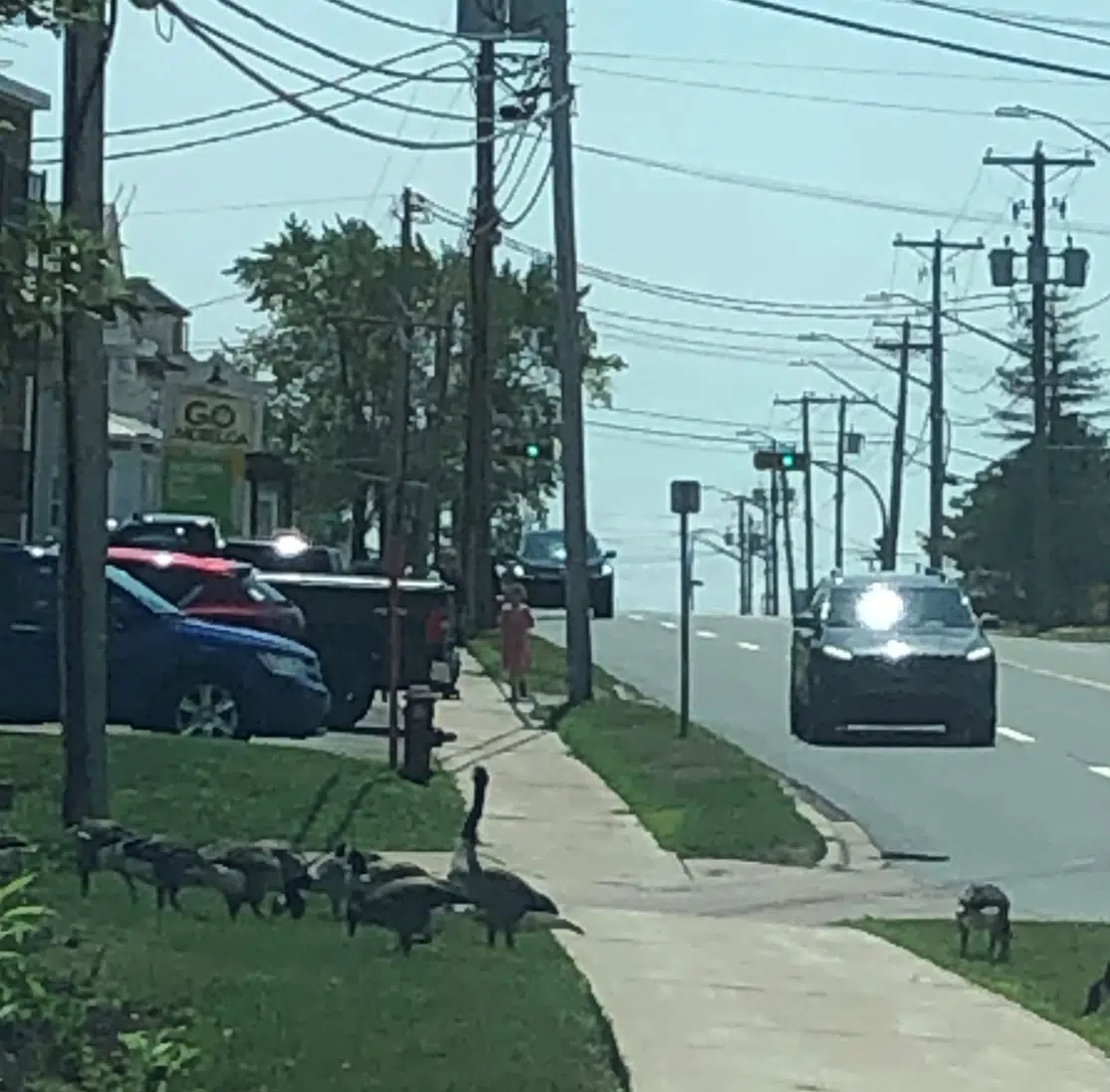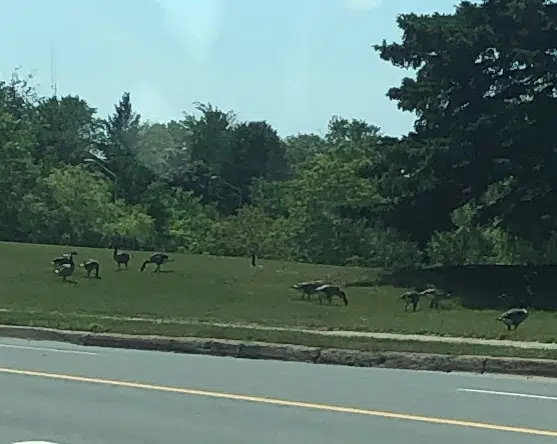
(Photo: 91.9 The Bend)
If you’ve been travelling on West Main Street in Moncton recently, you may have been forced to stop for a large gaggle of Canada Geese.
The Atlantic Wildlife Institute is asking for your patience as they cross..
Populations appear to be larger in some areas this summer, according to AWI Wildlife Director Pam Novak.
She says it could be a case of increased breeding, or may even be as a result of COVID-19 and less people being out.
Motorists are finding themselves delayed, in other parts of the city as well, due to Canada geese, as they wait for the geese to cross the road, on foot.
“Right now, what is happening that many people don’t realise is that all of these birds are in their non-flight stage, because the goslings are now getting their first growth feathers and getting rid of all of that fuzz, the adults are actually molting all of last year’s feathers. They are actually grounded right now too,” Novak says.
This happens mid-July through the beginning of August, Novak says. “The groups come together and form these bigger flocks for further protection for themselves and for their goslings”
She adds once the feathers come in completely, it’s expected the geese will move off to more open waterways.
“A little patience is needed. It is a delicate time for the geese that are out there, because they re not able to get out of the way quickly. Slow down, let the whole group cross because they will keep following each other and then once they are across and back onto another green space, they will continue on their way,” Novak says.
It’s advised you don’t feed the geese, despite the temptation to do so.
Novak says, Canada geese will stay where there is a plentiful food source, and this will deter them from leaving the area.

(Photo: 91.9 The Bend)

(Photo: 91.9 The Bend)




